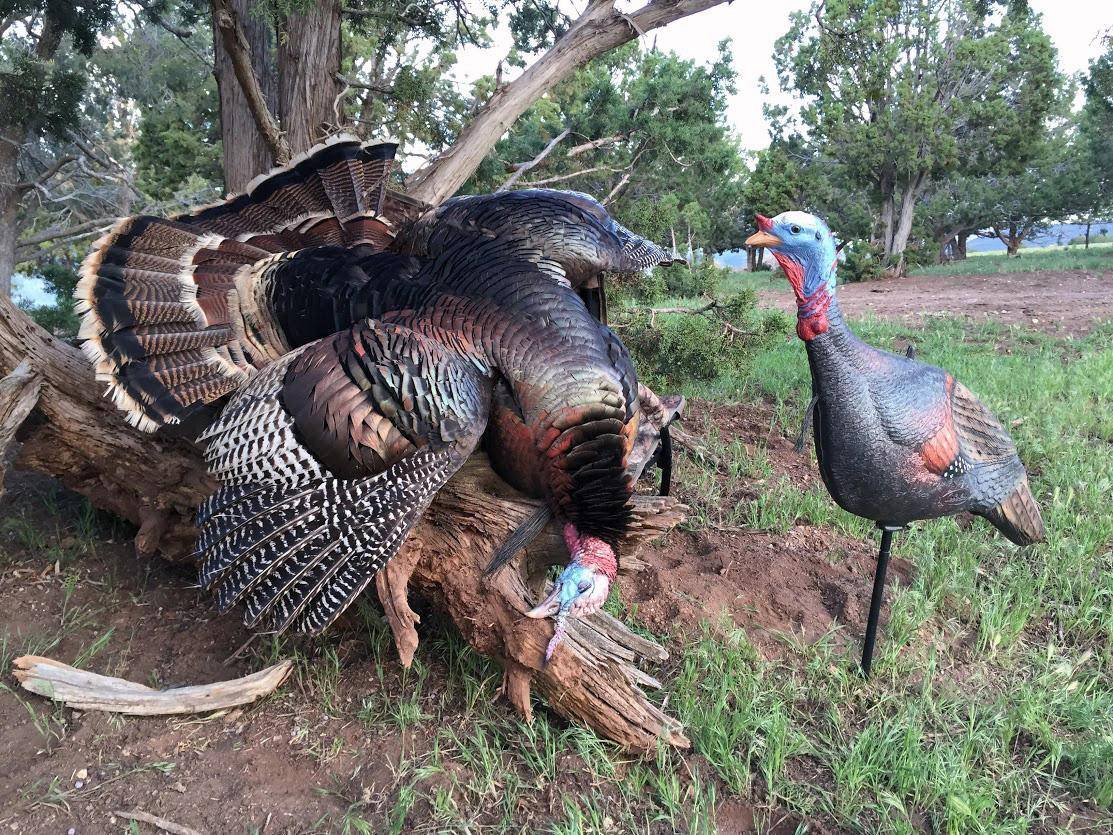DWR News Release
Thanksgiving is a time centered around all things turkey. From cute home decor to deliciously prepared main dishes, turkeys are a big focal point of the holiday. If you like the idea of harvesting your own locally sourced turkey instead of fighting the crowds to buy one at your neighborhood supermarket, you can start planning now for next year’s Thanksgiving feast and apply for an opportunity to hunt turkeys in Utah next spring.
The application period for the spring 2024 limited-entry turkey hunt opens at 8 a.m. on Dec. 12. To be included in the permit drawing, you must submit your application before 11 p.m. on Dec. 27. You can apply online or over the phone by calling the nearest DWR regional office.
The results of the drawing will be released no later than Jan. 10, 2024. You’ll be notified by email, but you can also get the drawing results online or by calling (800) 221-0659.
The limited-entry hunt will be held April 13-25, 2024. The following number of permits are available for each of the limited-entry turkey areas:
- Northern Utah: 360
- Central Utah: 275
- Northeastern Utah: 200
- Southeastern Utah: 200
- Southern Utah: 450
However, if you don’t draw one of the limited-entry permits, you can still hunt turkeys in Utah in the spring. After the limited-entry hunt is over, the general statewide turkey hunt takes place in May. Permits for the general-season hunt are not limited — although each hunter can only obtain one permit — and they are sold over the counter or online, so you’ll have no problem getting one.
Permits for Utah’s general statewide spring turkey hunt go on sale at 8 a.m. on March 5. The general turkey season will be held from April 29 to May 31, and the youth turkey hunt will run from April 26-28.
You can find more information about Utah’s upcoming spring turkey hunting seasons in the 2023-24 Utah Upland Game and Turkey Guidebook. The free guidebook is available on the DWR website or you can pick up a copy at a DWR office or from hunting and fishing license agents across Utah.
Turkey hunting seasons
Utah offers spring turkey hunts (limited-entry and general-season, which are for male birds only) and also a fall turkey management hunt (which offers some beardless and either-sex permits). The spring hunts provide more opportunity for hunters across the state, while the fall general-season turkey hunt was implemented in 2014 as a way to address ongoing nuisance turkey issues and depredation that result in damage to private property.
Because the fall hunt is specifically designed to eliminate conflicts with landowners, turkey hunting in the fall is administered to alleviate these conflicts, rather than to offer opportunity. Fall turkey hunting boundaries change annually to target specific nuisance or depredation areas, and the fall hunt is not available in all parts of Utah. This hunt runs from Oct. 2 to Feb. 28, 2024.
“The fall turkey hunting permits are also limited in number because they aren’t designed to provide opportunity, but to reduce recurring damage to specific properties,” DWR Upland Game Coordinator Heather Talley said.
History of turkeys in Utah
There are currently between 25,000-30,000 wild turkeys throughout the state. There were some population declines this year due to record snowfall last winter, which impacted turkeys due to impeded movements in finding food, as well as some previous declines due to drought. Therefore, turkey populations have been slightly declining in the last few years, but biologists anticipate an increase in many areas due to prime brood-rearing conditions this past summer.
There are two turkey subspecies that live in Utah: Rio Grande and Merriam’s. Turkeys have a long history of being in Utah, but while today’s populations have remained stable through recent decades, that wasn’t always the case.
“Based on historical and archeological evidence, it’s clear that Native Americans and turkeys coexisted in Utah,” Talley said. “That evidence includes pictographs, petroglyphs, blankets made from turkey feathers and turkey bones that have been found at places where Native Americans lived historically.”
However, until the 1950s, established turkey populations hadn’t been seen in Utah in 100 years or more. Except for a failed reintroduction in the 1920s, no records exist of turkeys being in Utah from the time Europeans started exploring the state to the successful reintroduction of the birds in the 1950s.
During the 1950s, biologists with the Utah Department of Fish and Game (the agency’s name was later changed to the Utah Division of Wildlife Resources in 1967) successfully released Merriam’s wild turkeys in Utah that had been obtained from Colorado and Arizona. These transplants established turkeys in Grand, Garfield, Kane, Iron and Washington counties. Turkeys from these populations have since been trapped and relocated within the state.
Beginning in 1989, the DWR began a wild turkey trapping and transplanting program within the state, using mostly Rio Grande turkeys and occasionally Merriam’s turkeys from Arizona, Colorado, Kansas, Oklahoma, South Dakota, Texas and Wyoming.

